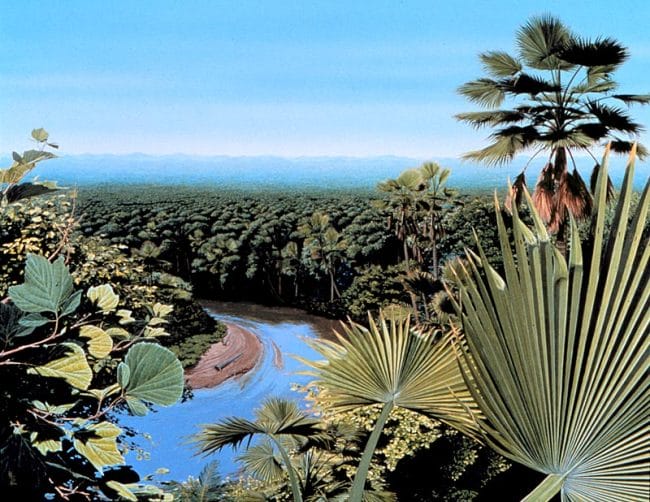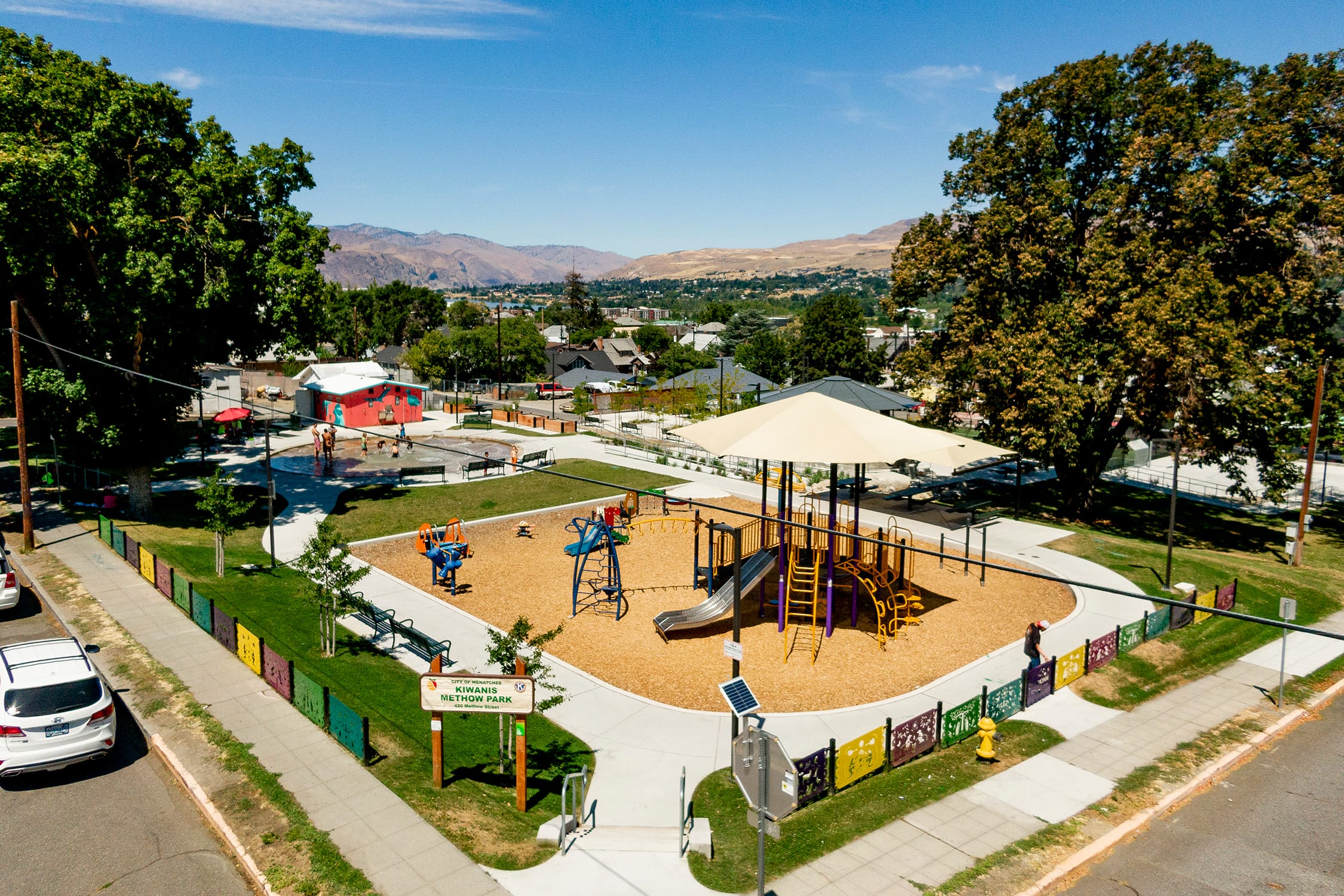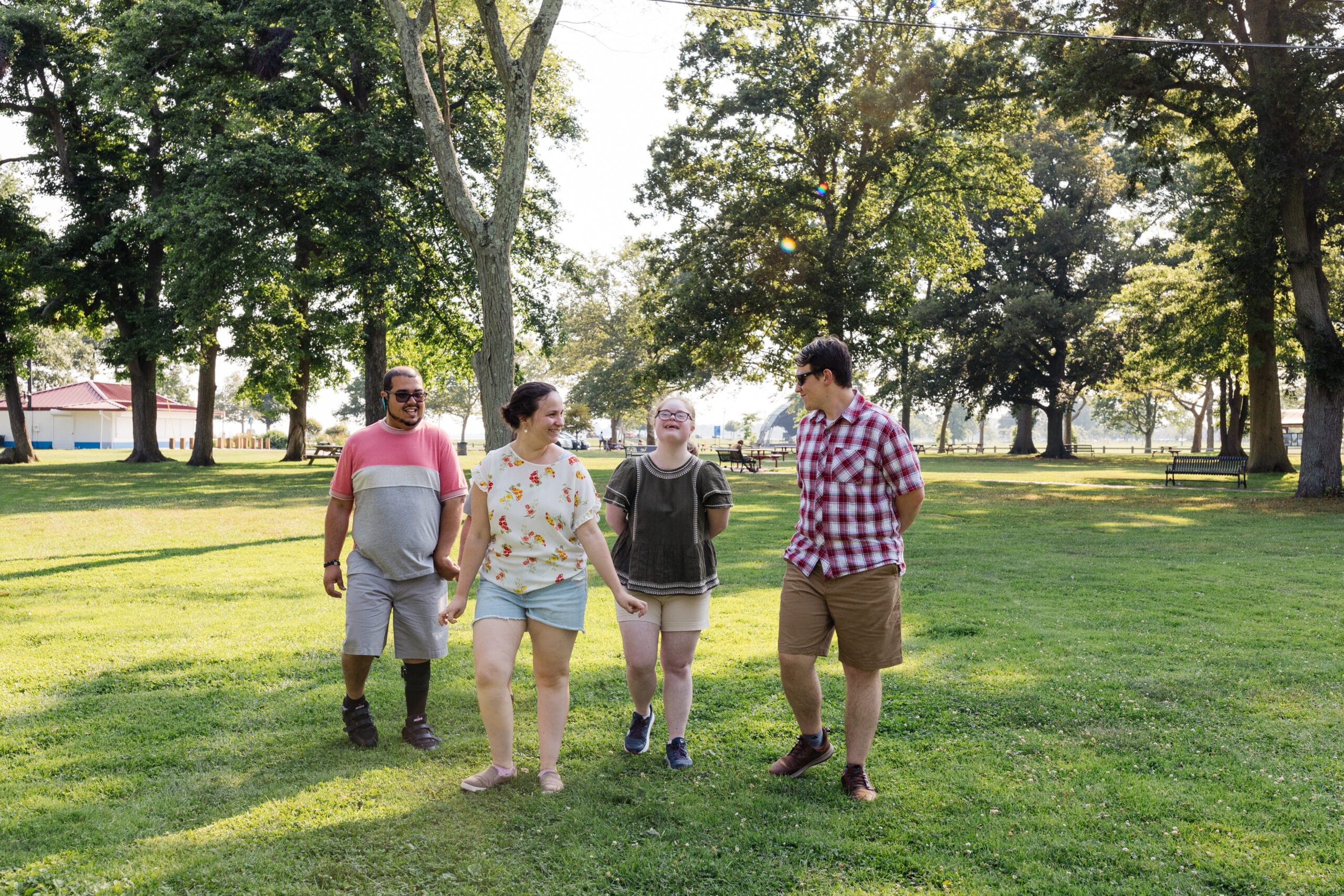
Paleontologists seek the origins of the modern world in Colorado’s “Cretaceous Park”
Paleontologists seek the origins of the modern world in Colorado’s “Cretaceous Park”
Imagine you’re visiting Colorado Springs—not today, but more than 66 million years ago. Instead of the high, arid plain you’ll find there now, you’d walk beneath the dark canopy of a rainforest, among giant ferns and big rivers charging off the slopes of the brand-new Rocky Mountains. You might spot Tyrannosaurus rex and Triceratops alongside turtles, frogs, snakes, and even some small mammals.
This was Colorado when a giant asteroid struck the Earth’s surface, setting off firestorms that boiled oceans. The dust lingered in the atmosphere, blocking out the sun and plunging the planet into a long winter that spelled the end for the dinosaurs.
This series of events is known as the Cretaceous-Tertiary (or “K-T”) extinction, since it defines the end of the Cretaceous period and the dawn of the Tertiary. And in a handful of places on the planet today, you can actually touch this moment in time.
The Corral Bluffs contain fascinating traces of human history, too. They earned their name from cowboys driving herds from Texas to Montana along the famed Goodnight-Loving Trail in the 1860s—the basis for the epic Western “Lonesome Dove.”Photo credit: The Trust for Public Land, Justin Spring
The Corral Bluffs is one of those places. Rising out of the plains east of Colorado Springs, they’re a jumble of canyons and badlands carved by eons of wind and water. The Trust for Public Land and the City of Colorado Springs Parks, Recreation and Cultural Services Department recently protected a section of the bluffs, where the bedrock is made up of layers of sediment that have washed down out of the nearby Rocky Mountains for tens of millions of years.
In some places, scientists have pinpointed the layer of rock that accumulated during the asteroid’s aftermath. Inside this thin strip of rock are minute globs of glass, which scientists believe to be the product of molten dust kicked up by the asteroid that brought on the extinction. This layer of rock is called the “K-T boundary”—and along with the layers immediately below and above, it’s got a lot to tell us.
“This area is probably one of the best examples we know of anywhere on the planet for studying how the planet recovered from the last major extinction,” says paleontologist Kirk Johnson. He did decades of research in the Denver Basin before taking the job as director of the Smithsonian National Museum of Natural History. Johnson says that while scientists have yet to pinpoint the K-T boundary layer at Corral Bluffs, they know the rock is the right age and condition to contain fossil evidence of what Earth was like just before the asteroid struck—and in the million or so years that followed.
Finding the exact K-T boundary layer today is tough—where it does occur, it’s just a thin strip of clay, rarely wider than your finger. And conditions had to be just right for the K-T boundary to form in the first place. “We don’t find the K-T boundary up in the mountains, since the Rockies were then, and still are, eroding away,” Johnson says. “But you do find it out on the plains, where rocks and mud were washing down off the slopes and accumulating in layers that covered up and preserved that part of geologic history.”
And for the K-T boundary to be visible to us today, it has to have been returned to the surface, through the geologic forces of uplift and erosion that are constantly shaping the Earth’s surface. “We know of about 300 places around the world where the rock that could contain the K-T boundary is exposed,” says Johnson. Of those, he says, about 100 are in rock that formed on land, and of those 100, maybe 25—including the Corral Bluffs—are in a condition that allows researchers like Johnson to study the fossils they contain.
 For their “Ancient Denvers” exhibit, the Denver Museum of Nature & Science worked with artists to imagine Colorado throughout Earth’s history. After the asteroid impact, the plains were lush and warm, but home to relatively few species that survived.Photo credit: Denver Museum of Nature & Science, Donna Braginetz
For their “Ancient Denvers” exhibit, the Denver Museum of Nature & Science worked with artists to imagine Colorado throughout Earth’s history. After the asteroid impact, the plains were lush and warm, but home to relatively few species that survived.Photo credit: Denver Museum of Nature & Science, Donna Braginetz
In the rock layers below the K-T boundary at research sites around the Mountain West, Johnson and other researchers have found fossil evidence of the diversity of life on the planet when the asteroid struck: from giant dinosaurs to crocodiles, alligators, frogs, and turtles—along with trees and ferns. Immediately above the K-T boundary, by contrast, there are drastically fewer species to find—since 75 percent of life on Earth was wiped out in the extinction.
“Though the K-T layer may have been eroded away locally, it’s the quality of that rock above the K-T boundary makes Corral Bluffs really special and important,” says Johnson. “I’d say it’s one of the top three places that we know of on the planet that preserves the fossil record of the first million or so years after the asteroid struck.”
That time period—short, in geologic terms—saw the rapid rise of mammals. “We do find mammal fossils before the asteroid, but they were small, none larger than a raccoon,” says Johnson. “When the asteroid wiped out dinosaurs, the mammals that survived had fewer predators, which led to population growth and species diversification. Soon, mammals grew to the size of sheep and deer.”
Ian Miller chairs the Earth Sciences department at the Denver Museum of Nature & Science. Like Johnson, he’s spent many days digging for fossils around the Denver Basin—and he agrees the Corral Bluffs hold particular potential. “The fossil record at Corral Bluffs makes it a globally important spot for paleontologists who want to know how the planet recovered from the most recent extinction, and how mammals rose to become the dominant animal group on Earth.”
But until recently, a wide swath of the bluffs was privately owned and more or less off-limits to scientists—and anyone else seeking fresh air and a place to explore. Now that the property is owned by the City of Colorado Springs, researchers will be able to study it in-depth for the first time.
 80 miles north of Colorado Springs in the Denver suburb of Thornton, researchers are excavating a fossilized triceratops skeleton from the late Cretaceous period. No dinosaur skeletons have been found at Corral Bluffs—yet.Photo credit: Denver Museum of Nature & Science
80 miles north of Colorado Springs in the Denver suburb of Thornton, researchers are excavating a fossilized triceratops skeleton from the late Cretaceous period. No dinosaur skeletons have been found at Corral Bluffs—yet.Photo credit: Denver Museum of Nature & Science
Though they study events millions and even billions of years in the past, paleontologists like Johnson and Miller aren’t just looking back. As we grapple with challenges like habitat loss and climate, we benefit from researchers’ understanding of the Earth’s history.
“What are we doing to the planet? Where are we headed? How long does it take to return to pre-extinction levels of species diversity? We can model the future, but the data that’s going into those models is from our piecing together what happened in the past,” says Miller. “It’s from the fossil record, from places like Corral Bluffs.”
Today, Corral Bluffs is an important sanctuary for rare plants and animals—now protected from development, the cliffs and canyons offer shelter and food that can’t be found across most of the surrounding plains. In Miller’s view, preserving places like this will only become more important. “The property that was just protected could help us answer some key question of what life was once like,” says Miller, “But it’s also helping us save what we have.”
This raw, beautiful landscape in Southern California is home to Indigenous heritage sites, and it provides critical habitat for threatened and endangered species. Urge President Biden to safeguard this extraordinary landscape today!


Donate to become a member, and you’ll receive a subscription to Land&People magazine, our biannual publication featuring exclusive, inspiring stories about our work connecting everyone to the outdoors.
See how our supporters are helping us connect people to the outdoors across the country.










